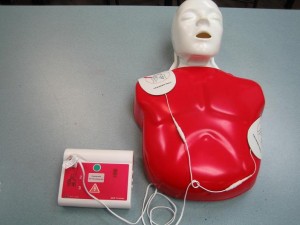Advanced Life Support is a program that teaches trainees how to give CPR in a clinical setting such as a hospital, with CPR equipment and medication. There are two kinds of ALS programs taught in our providers: ACLS and PALS. Advanced Cardiac Life Support (ACLS) teaches trainees how to manage adult victims of cardiac arrest while Pediatric Advanced Life Support (PALS) teaches trainees how to manage pediatric victims. ALS programs have the same basic structure as the Basic Life Support (BLS) programs but cover more topics, especially clinical management of different cardiovascular emergencies.
ALS programs are best in highlighting all the links in the American Heart Association’s Chain of Survival. With BLS training, only the first three steps are adequately taught to trainees. There are five links: (1) recognition of CV emergency, (2) chest compressions and rescue breaths, (3) AED, (4) ALS, (5) post-cardiac arrest care.
Getting certified
Becoming a certified rescuer is easy with any of our programs, which are all certification courses. If you enrol in a program and pass the post-test, usually a practical and a written test, you will be awarded a training certificate with a validity of 24 months. Rescuers can sign up for re-certification programs to renew certification that is nearing expiration. However, in the case that a credential has expired, rescuers will need to retake the program.
Enrolling in training
Students can visit any of our provider websites to sign up for a program. Online application forms are available, as well as contact details for applicants sent through e-mail or over the telephone. Enrollment in person is highly encouraged by the staff; be sure to conduct your business during regular operating hours.
PALS: Pediatric Advanced Life Support Training

PALS training is focused on the cardiorespiratory management of pediatric victims. Pediatric victims are children aged one month up to 17 years old. Cardiopulmonary resuscitation given to infants and younger children are very different from CPR given to adults. With infants, only fingers are used to depress the chest while younger children (toddlers, school-age children) are given CPR with one hand, as opposed to two hands with adult rescues. PALS teaches students how to recognize cardiac arrest and respiratory problems in children, as well as how to perform pediatric physical assessment. The amount of joules given during defibrillation also varies as the child ages.
One of the most important topics covered in pediatric pharmacology. Medication is very different when given to children, especially if a healthcare provider gives the child an adult dose. A normal adult dose can be fatal to a child, especially medications that can cause cardiac arrest like Potassium Chloride (KCl).
Program length: The PALS training program runs for 14 hours, over a two-day program. Re-certification is available, a 6 hour and 20 minute or a 8 hour and 20 minute class (depending on optional stations).
Pre-requisites: To qualify for PALS (and ACLS) training, students are required to have a valid BLS for healthcare providers credential. A pre-test is also given before the start of the program that students are required to pass.